|
|||
|
Today’s Yesterland article is about a Yester-sponsor at Epcot, Disney’s Hollywood Studios, Disneyland Park, and Disney California Adventure.
|
|||
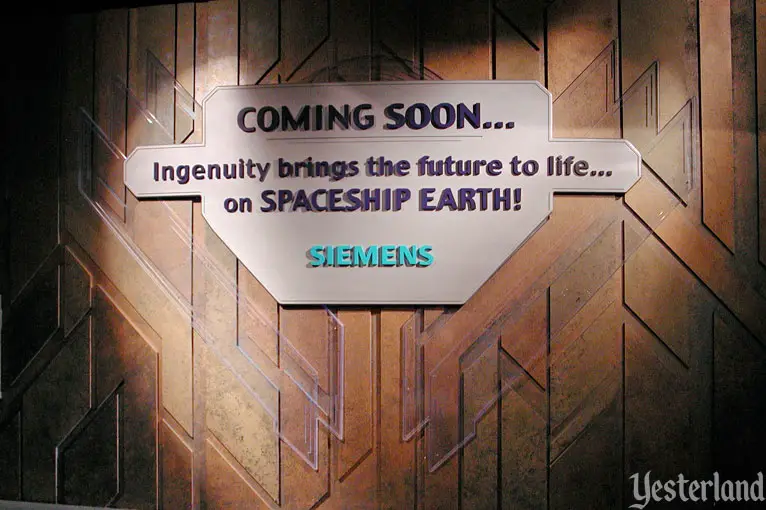
Photo by Werner Weiss, 2006 Coming soon… Siemens! |
|||
|
Bank of America, Coca-Cola, Pepsi-Cola, McDonald’s, Stouffer’s, Swift’s Premium, Kraft Foods, Nestlé, TWA, Eastern Airlines, United Airlines, PSA, Delta Air Lines, FedEx, Richfield Oil, Chevron, ExxonMobil, General Motors, Honda, Goodyear Tire & Rubber, General Electric, RCA, Alamo Rent A Car, Mattel Toys, Eastman Kodak, GAF, Polaroid. And those are just a few of them. So many well-known consumer brands have been sponsors of Disney theme park attractions, shows, parades, and restaurants. |
|||
|
|
|||
|
And then there’s Siemens. Siemens? Yes, Siemens—a company most Americans had never heard of before seeing the logo at a Disney park. Some sponsorships are small, like the Chiquita logo slapped onto a few banana plants and signs at Epcot’s Living with the Land boat ride since 2011. But the Siemens relationsip was on an epic scale—as described in a press release in 2005: BURBANK, Calif. & NEW YORK—Nov. 8, 2005—Siemens AG (NYSE:SI) and The Walt Disney Company (NYSE:DIS) announced today a 12-year strategic alliance — bringing together the world’s leading family entertainment company with a premier global technology and infrastructure company. While Disney already uses a range of Siemens technologies, the agreement expands the relationship and paves the way for the two companies to broaden their technological collaboration across several platforms. The press release described a bunch of sponsorships planned for Disney parks on both sides of the United States: As part of the deal, Siemens will sponsor several rides and attractions at Walt Disney World Resort including the Epcot icon, “Spaceship Earth,” the nighttime Epcot fireworks show, “Illuminations: Reflections of Earth,” as well as new attractions that will be incorporated into Innoventions both at Epcot and at Disneyland Resort. The Sylvania lighting division of Siemens will sponsor Disney-MGM Studio’s holiday light show—“Osborne Family Spectacle of Lights,” as well as “Disney’s Electrical Parade” and “Walt Disney’s Parade of Dreams” at Disneyland Resort in California. Most of these sponsorships would just involve adding Siemens or Sylvania logos, without any substantive changes. But the changes to one attraction would be huge. |
|||
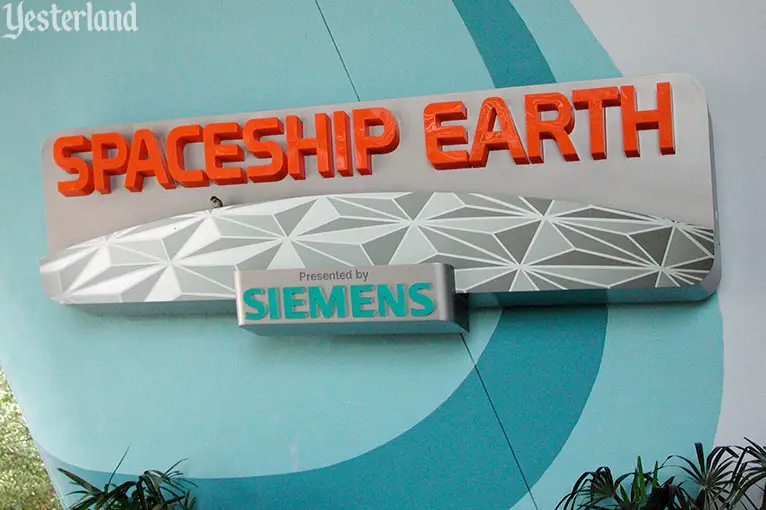
Photo by Werner Weiss, 2007 Entrance to Spaceship Earth at Epcot |
|||
|
Spaceship Earth, the attraction within Epcot’s iconic landmark of the same name, had been sponsored by AT&T—branded as the Bell System (AT&T’s network of regional telephone companies) from 1982 to 1984, and then simply as AT&T from 1984 to 2004 due to the Federal breakup of the Bell System. Under the sponsorship of AT&T, a communications company, Spaceship Earth dealt with the history and future of communications. It had three different narrators over the years—radio-and-television actor Vic Perrin (or actor-director Lawrence Dobkin, according to Marty Sklar); news anchor Walter Cronkite; and actor Jeremy Irons. Siemens AG, a global electronics and engineering company based in Munich, Germany, had $91.5 billion in revenue in fiscal 2004. Its business sectors included Medical, Power, Automation and Control, Transportation, Information and Communications, Lighting, Building Technologies, Water Technologies and Services, and Home Appliances. Given this portfolio, the theme of Siemens’s version of Spaceship Earth would go beyond just communications. The renovation of Spaceship Earth touched almost every existing scene and added entirely new ones. New narration, spoken by Dame Judi Dench, told of human progress: “After 30,000 years of time travel, here we are—a truly global community, poised to shape the future of this, our Spaceship Earth.” |
|||
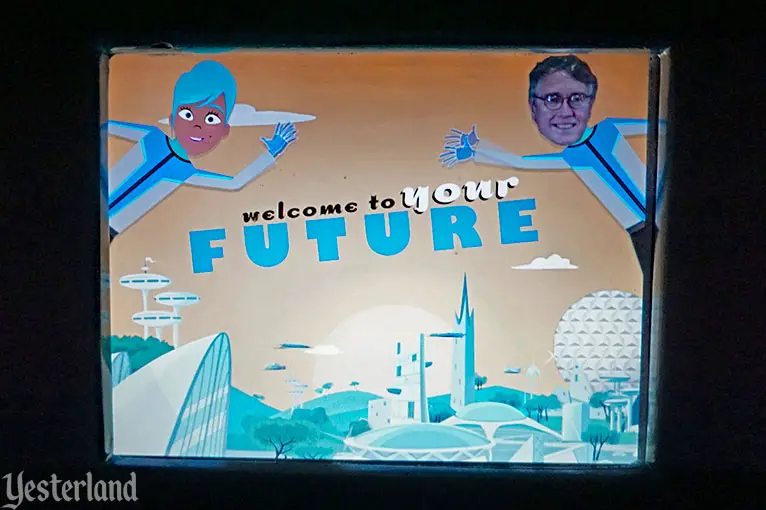
Photo by Werner Weiss, 2016 Gender-neutral guest and the Curator of Yesterland during the Spaceship Earth descent |
|||
|
The descent at the end of the ride had always been problematic. Blinking lights and shallow dioramas had been squeezed into a seemingly endless series of tight spaces. In Siemens’s version, guests would use interactive touch-screen monitors within the ride vehicle to “build” cartoons about their future. The post-show area—originally Earth Station (dining reservations and Epcot Center Guest Relations) and then AT&T Global Neighborhood—became Project Tomorrow: Inventing the Wonders of the Future. Video-based attractions—“Body Builder,” “Super Driver,” “Innervision,” and “Power City”—showed off Siemens technology with a soft sell. |
|||
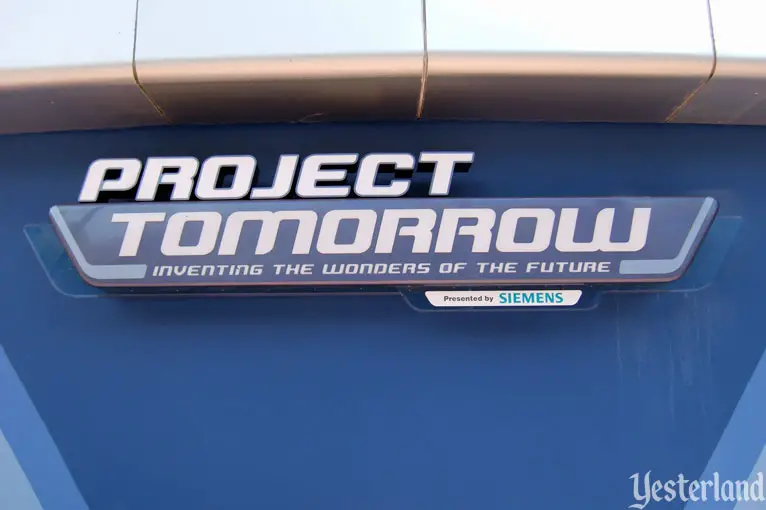
Photo by Allen Huffman, 2007 Exterior sign for Project Tomorrow at Epcot |
|||
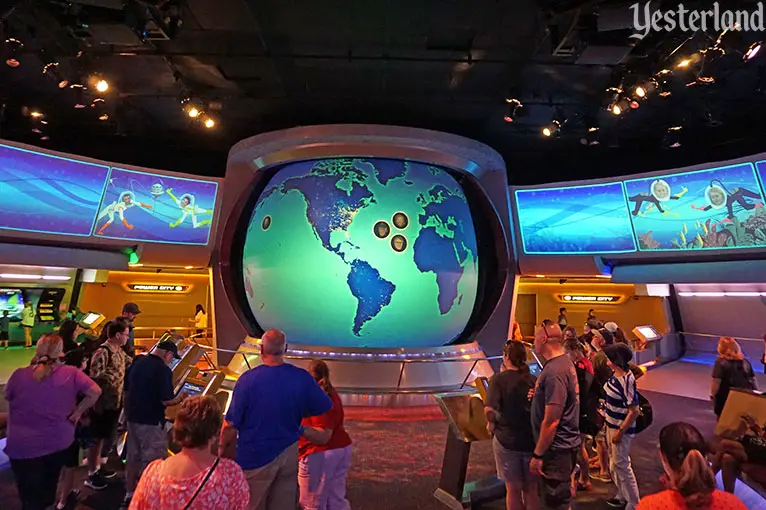
Photo by Werner Weiss, 2016 Inside Project Tomorrow at the exit from the Spaceship Earth ride |
|||
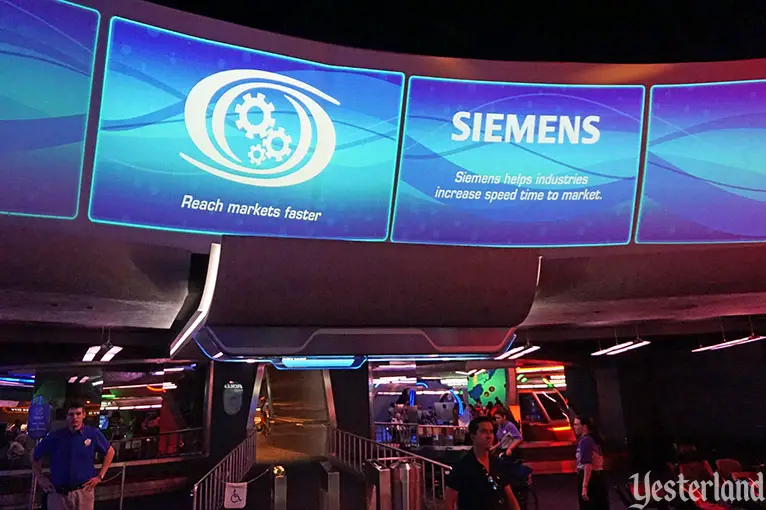
Photo by Werner Weiss, 2016 Siemens at Project Tomorrow |
|||
|
Not only would Siemens sponsor Epcot’s landmark attraction— the first attraction of the day for many Epcot guests. Siemens would also sponsor Epcot’s nighttime extravaganza—the grand finale of the night for those guests. |
|||
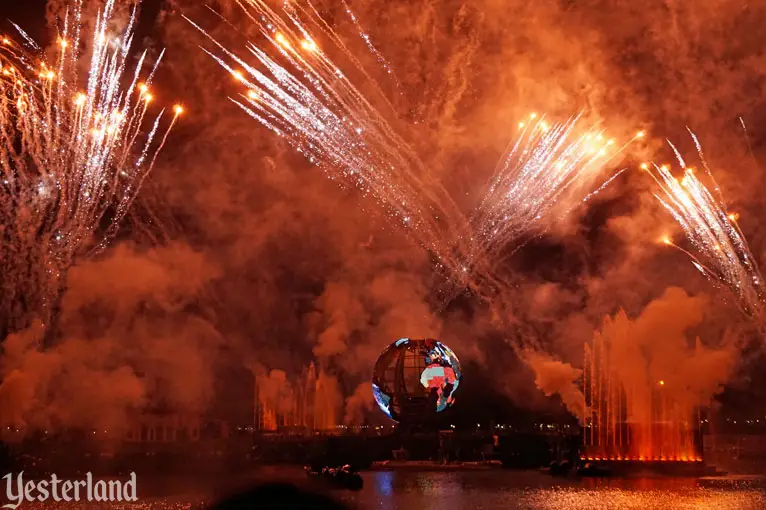
Photo by Werner Weiss, 2016 Illuminations: Reflections of Earth fireworks at Epcot |
|||
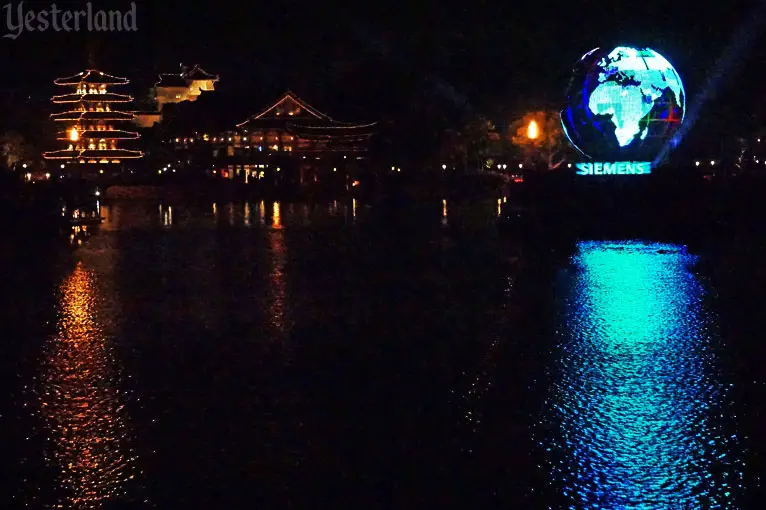
Photo by Werner Weiss, 2016 Siemens logo during IllumiNations |
|||
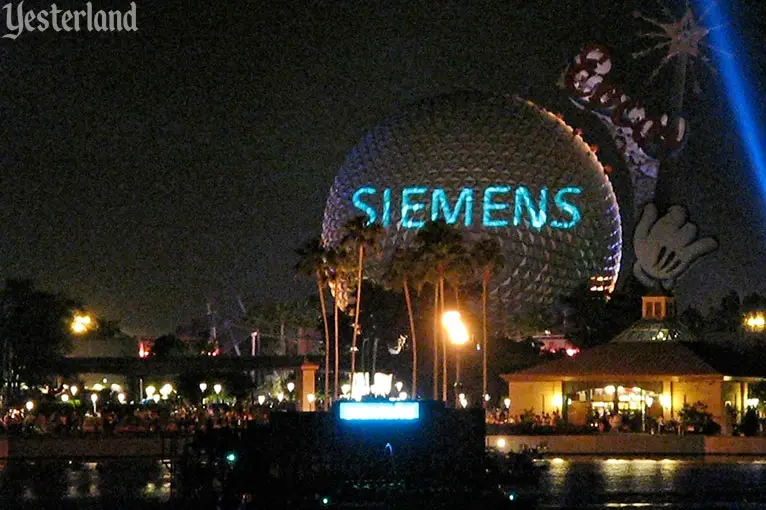
Photo by Werner Weiss, 2007 Siemens logo on Spaceship Earth after IllumiNations |
|||
|
Illuminations: Reflections of Earth, a major update to earlier versions of Illuminations, premiered October 1, 1999, for the Walt Disney World Millennium Celebration. By the time the Siemens name was added, the show had been running six years. It continued largely unchanged for the entire term of the Siemens-Disney alliance. The Disneyland Resort also gained multiple sponsorships from the alliance. Disneyland had its own version of Project Tomorrow within Innoventions. Guests could play with the same video-based attractions as at Epcot—even the touch-screens from the ride, just not in ride vehicles. |
|||
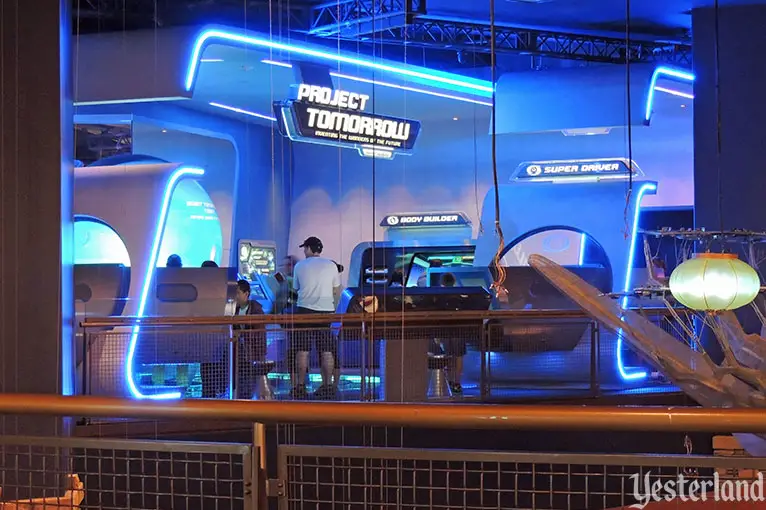
Photo by Werner Weiss, 2015 Project Tomorrow at Innoventions, Disneyland |
|||
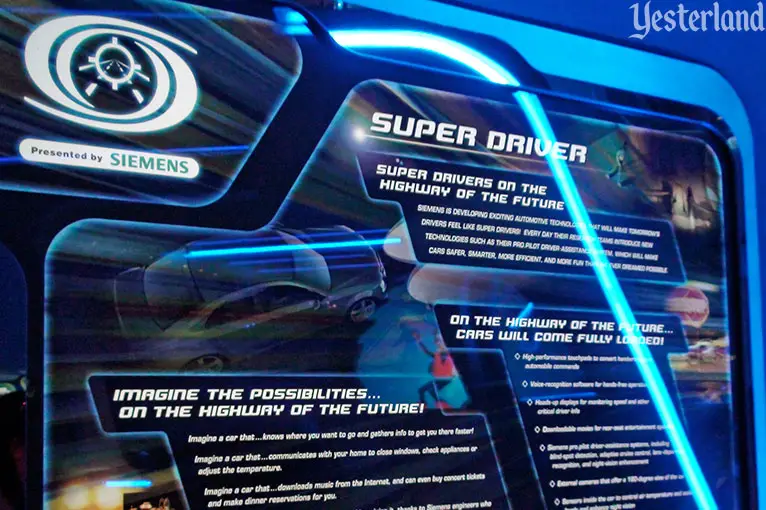
Photo by Allen Huffman, 2009 Promoting Siemens technology with “Super Driver” at Innoventions, Disneyland |
|||
|
Two parades at the Disneyland Resort were sponsored by Sylvania, a lighting brand owned by Siemens when the Siemens-Disney alliance began. Sylvania was founded in 1901 in Middleton, Massachusetts. Its original business—strange but true—was to repair burnt-out light bulbs. According to Sylvania’s website, “The company would buy an old bulb for a few cents, cut off the glass tip, replace the filament, and reseal the bulb.” Amazing! Sylvania merged with General Telephone & Electronics (GTE) in 1959. Babyboomers remember Sylvania as a brand not just for light bulbs, but also for televisions, radios, and the vacuum tubes for such products. GTE sold Sylvania Lighting to Siemens in 1993, after having already sold Sylvania’s consumer electronics business to Philips. Siemens had bragging rights when it came to lighting. Thomas Edison invented the modern incandescent light bulb in 1879, but, according to Sylvania’s website, it was Werner von Siemens whose company “perfected a light bulb in 1880.” |
|||
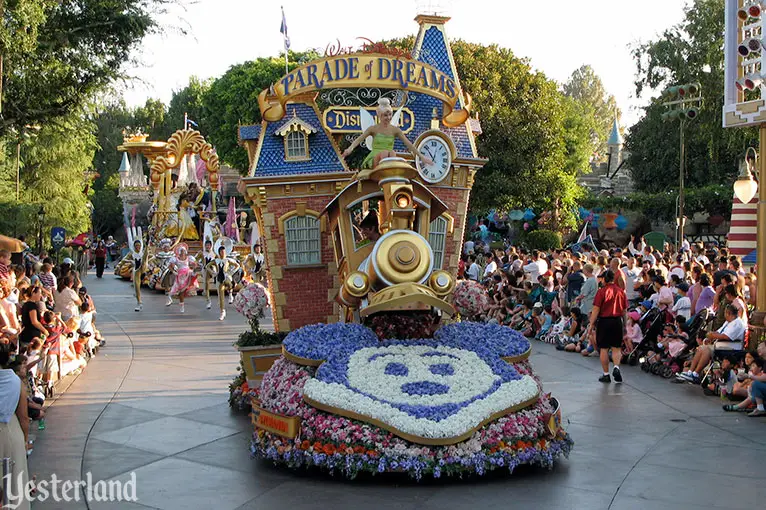
Photo by Werner Weiss, 2006 Parade of Dreams at Disneyland |
|||
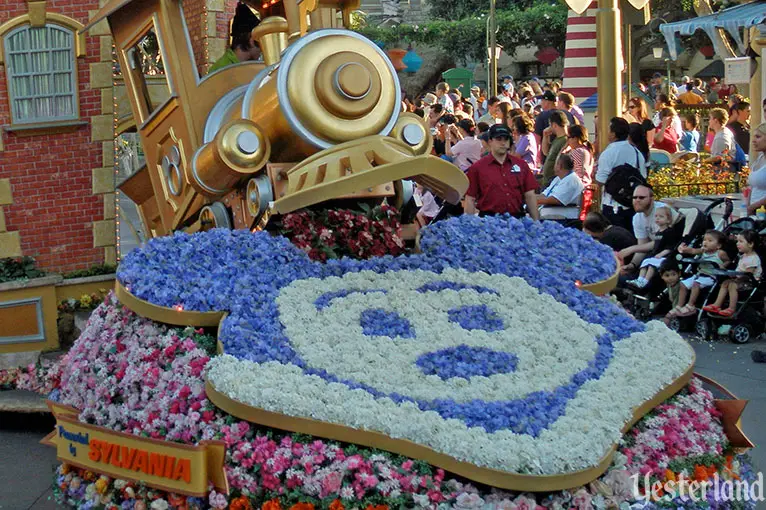
Photo by Werner Weiss, 2006 Sylvania logo at Parade of Dreams, Disneyland |
|||
|
Walt Disney’s Parade of Dreams at Disneyland debuted May 5, 2005. The impressive parade was part of the Happiest Celebration on Earth, commemorating the 50th anniversary of Disneyland. The parade lasted until November 11, 2008. There wasn’t a real connection to lighting, but the parade featured the Sylvania logo on its title float. |
|||
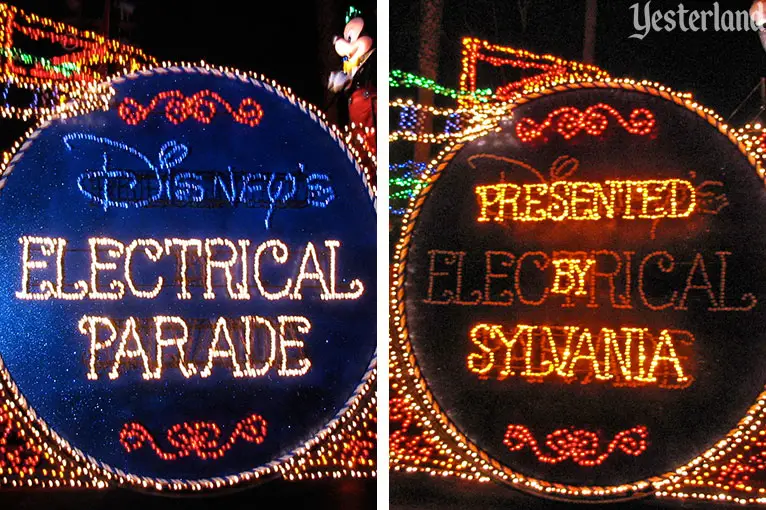
Photos by Werner Weiss, 2006 Disney’s Electrical Parade at Disney California Adventure |
|||
|
The Sylvania logo was added to Disney’s Electrical Parade in 2006. The venerable nighttime parade was at Disney’s California Adventure from 2001 to 2010. The Sylvania logo made sense on a parade that celebrated electric light bulbs. In 2009, eco-friendly LED lighting and new sound technology replaced the old bulbs and audio system. Subsequent runs of the parade at Magic Kingdom Park and Disneyland Park, with its name restored to the Main Street Electrical Parade, were not sponsored by Sylvania or Siemens, even though the Siemens-Disney alliance was still in force. |
|||
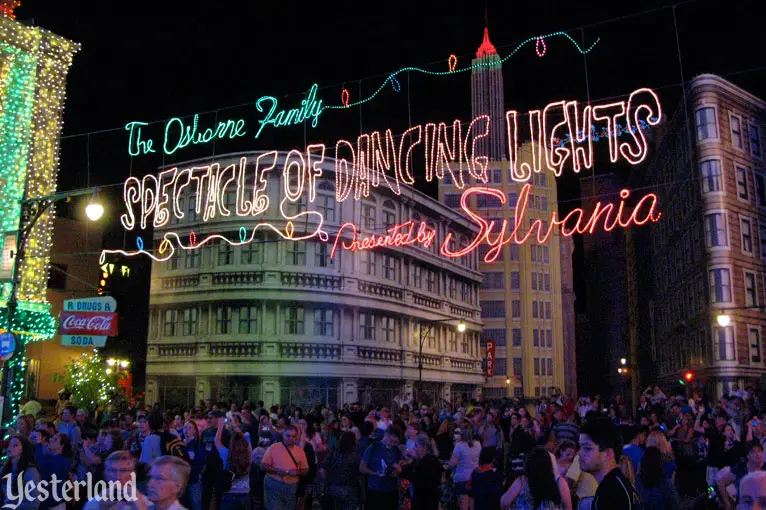
Photo by Werner Weiss, 2010 The Osborne Family Spectacle of Dancing Lights, presented by Sylvania |
|||
|
Disney had a seasonal attraction at Disney-MGM Studios / Disney’s Hollywood Studios that celebrated lighting even more than Disney’s Electrical Parade. The Osborne Family Spectacle of Dancing Lights (originally The Osborne Family Spectacle of Lights before they began “dancing” in 2006) began life as elaborate Christmas decorations at the home of Arkansas businessman Jennings Osborne. Neighbors objected. Disney had a solution. For the 1995 holiday season, Disney installed Osborne’s lights on the old residential street that had been part of the Backstage Studio Tour. It was an instant hit and became an annual tradition. When the residential street was demolished, the lights moved to the Streets of America, where the show was even bigger and better. In 2006, Sylvania became the sponsor. A perfect place to promote Sylvania, right? |
|||
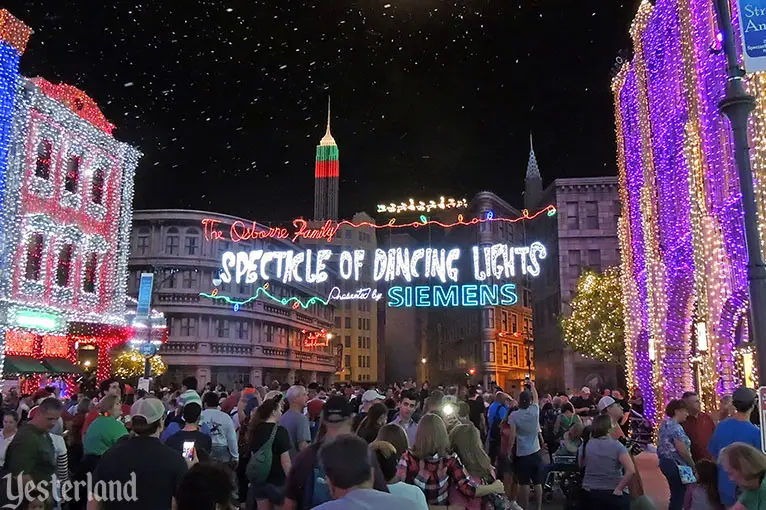
Photo by Werner Weiss, 2015 The Osborne Family Spectacle of Dancing Lights, presented by Siemens |
|||
|
In 2011, Siemens got out of the lighting business by spinning off its Osram division. With that move, Sylvania, a part of Osram, was no longer part of Siemens. During its final years, it was the Siemens logo, not the Sylvania logo, on The Osborne Family Spectacle of Dancing Lights. The spectacle was unplugged on January 6, 2016, after the 2015 holiday season. The Streets of America would no longer be there. Missing from the 2005 Siemens-Disney alliance press release was that “it’s a small world” at Disneyland Park—but not at Magic Kingdom Park—would also be part of the agreement. The logo on the ride was initially Sylvania. As with the The Osborne Lights, the Siemens logo eventually replaced the Sylvania logo. |
|||
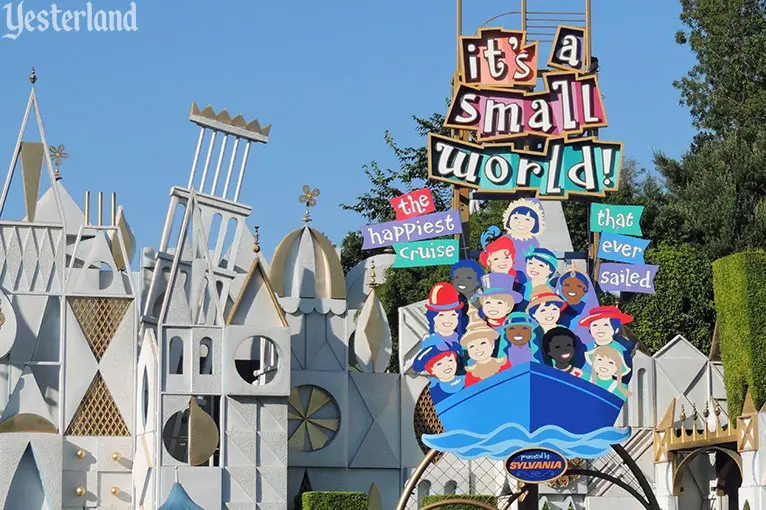
Photo by Werner Weiss, 2013 The sign for a very popular ride at Disneyland |
|||
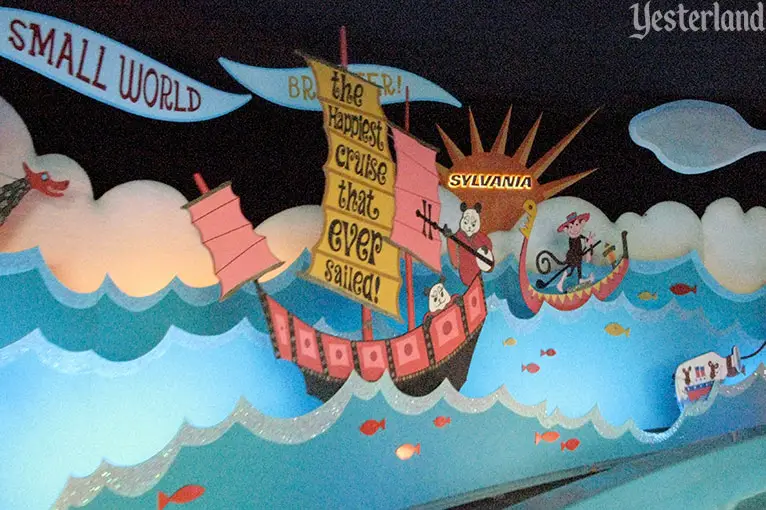
Photo by Werner Weiss, 2010 Sylvania logo inside “it’s a small world” |
|||
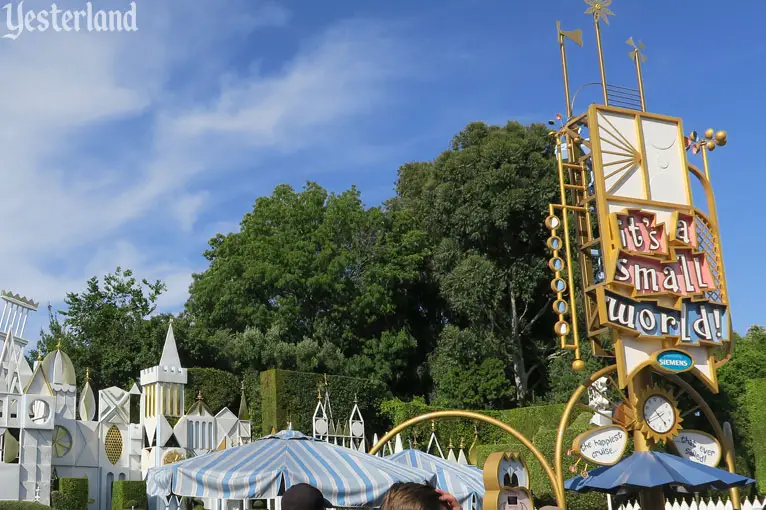
Photo by Allen Huffman, 2017 Newer sign, with a Siemens logo instead of a Sylvania logo |
|||
|
As the 12-year Siemens-Disney alliance approached the end of its term, the Orlando Sentinel published an article, “Siemens will no longer be Disney sponsor,” on July 3, 2017. The alliance would end in October 2017. Reporter Gabrielle Russon quoted a Disney statement: “We appreciate their collaboration in helping create unforgettable memories for our guests at Walt Disney World Resort and Disneyland Resort over the last 12 years.” She also quoted a Siemens statement: “…Siemens and The Walt Disney Company have enjoyed an exciting marketing and technology alliance that has brought tremendous visibility to the Siemens brand and joy to its employees. The Siemens/Disney sponsorship has evolved with the company’s changing portfolio since 2005 and has exceeded expectations.” There’s still one question about the huge, expensive 12-year Siemens-Disney alliance: What was Siemens trying to accomplish? It wasn’t to sell more Sylvania lightbulbs. Even Siemens lost interest in the light bulb business before the 12 years were over. Undoubtedly, Siemens sought to sell more of its products and services to Disney. That tends to be a part of sponsorship deals. But Siemens may have had something much bigger in mind. |
|||
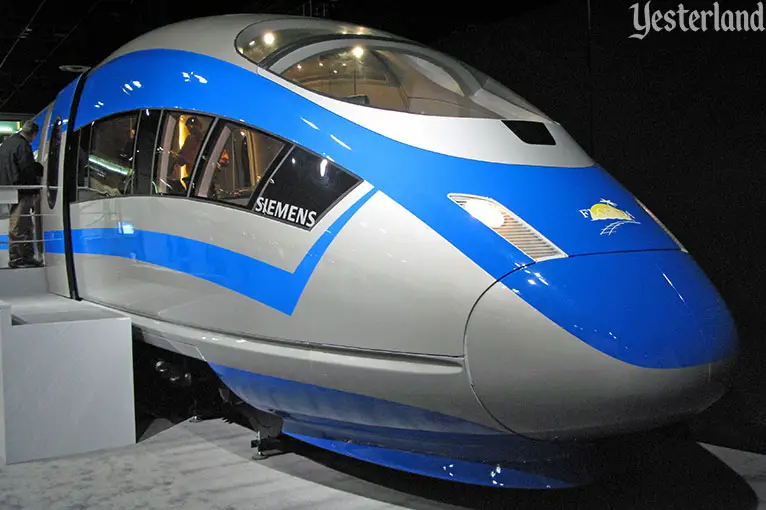
Photo by Werner Weiss, 2010 Siemens high-speed train mockup at the Orange County (Orlando) Convention Center |
|||
|
Around the time that the alliance was negotiated, Florida and California were both planning networks of high-speed trains. Siemens is a railway giant. Building awareness of Siemens with government officials and the general population might have been part of the strategy to land those contracts. Alas, in 2011, Florida axed its state’s plans (although a private rail initiative in Florida is still trying to move forward with Siemens trains). In 2017, the California High Speed Rail Authority decided to buy American trains. Although Siemens is also in the urban transit business, it doesn’t have anything in its portfolio even remotely compatible with the monorail beams at Walt Disney World or Disneyland. |
|||
|
|
Click here to post comments at MiceChat about this article.
© 2024 Werner Weiss — Disclaimers, Copyright, and Trademarks Updated November 15, 2024 |
||